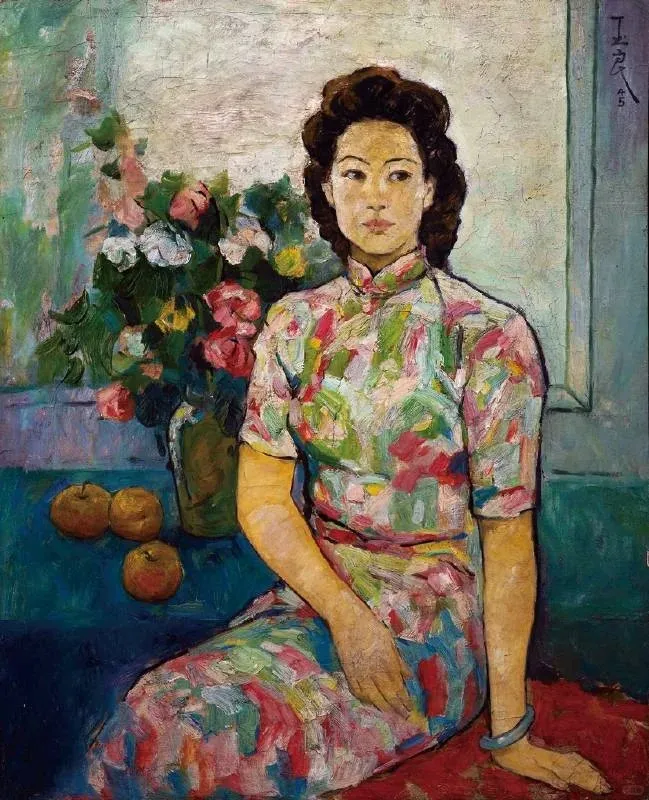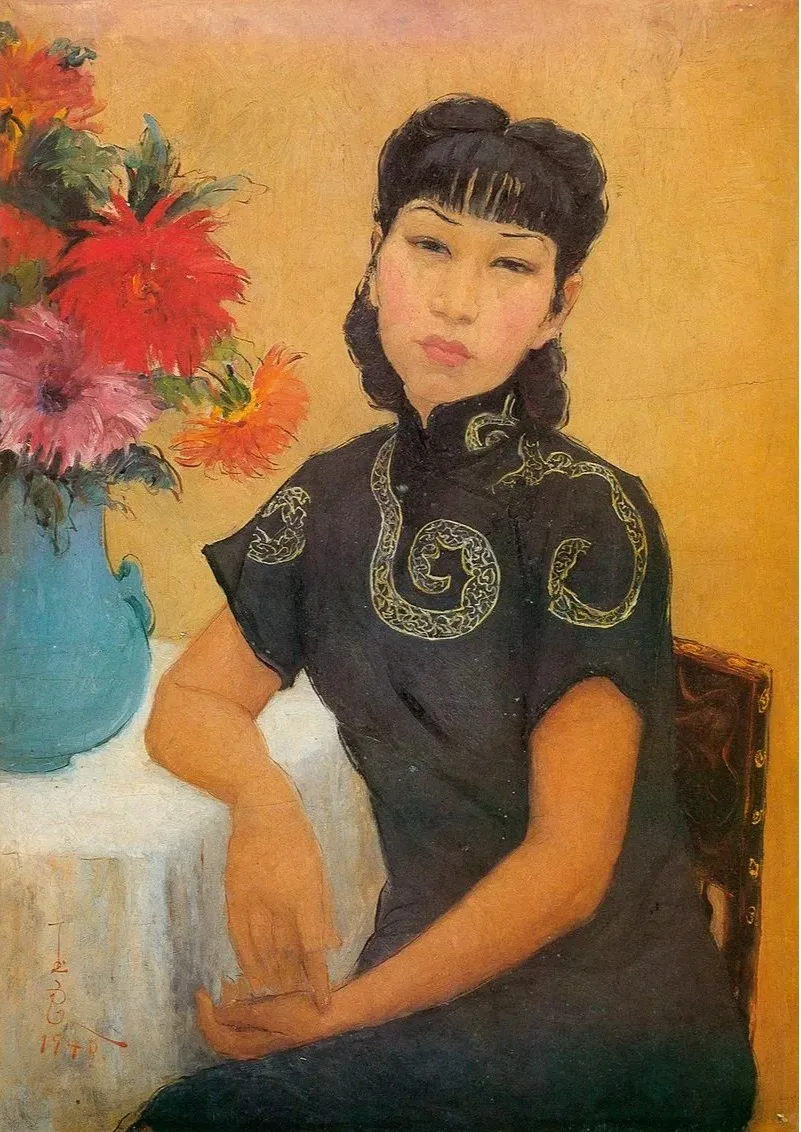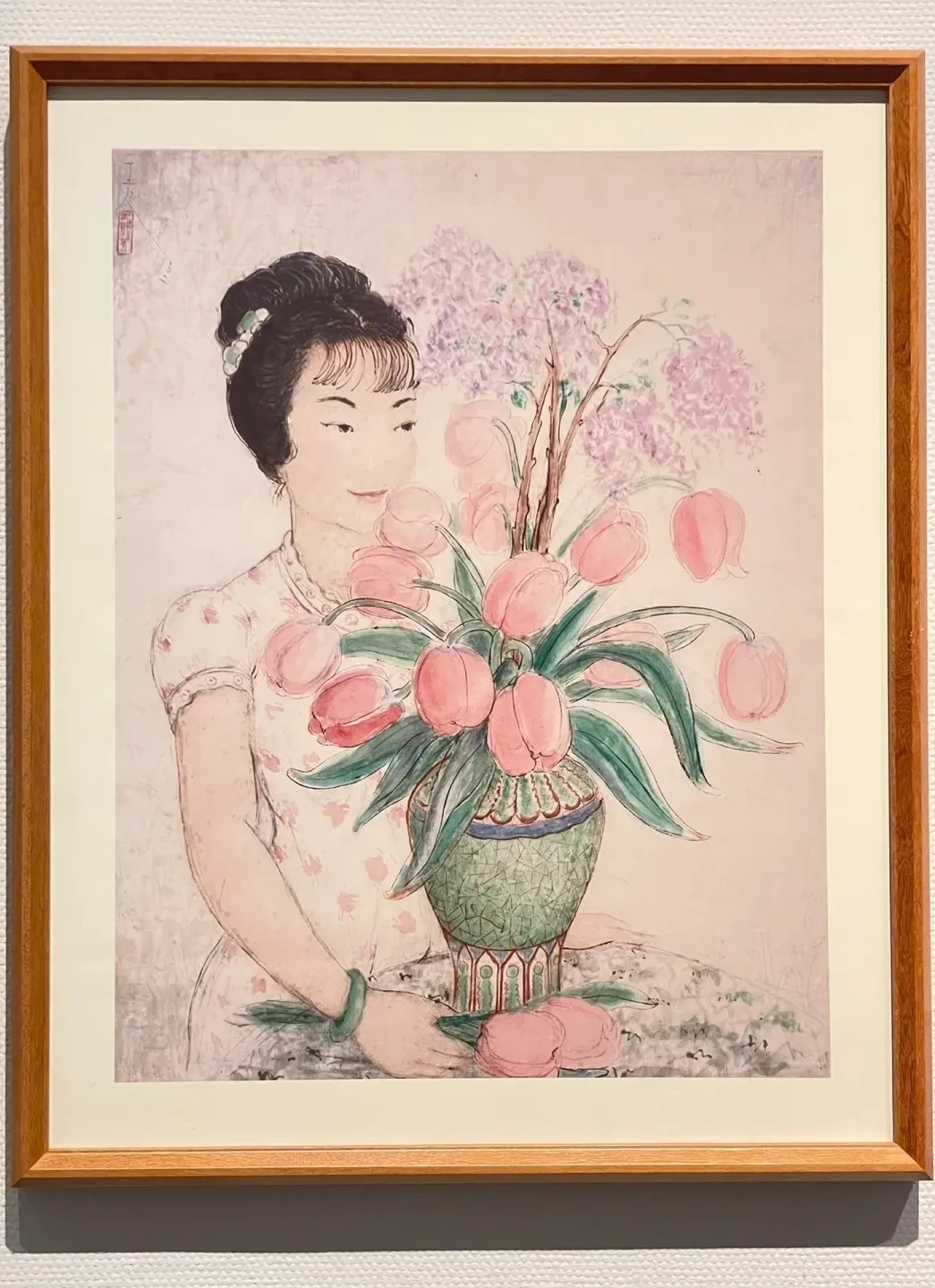
Women understand women best. The cheongsam girls in her paintings are well - known internationally! The second installment of the cheongsam series by the artist has arrived. In the previous issue, we mainly talked about the female cheongsam moments painted by male painters. Today, let's discuss how female painters shape female beauty, and what different perspectives and presentations they have from male aesthetics.
The painter we're going to talk about today has a special background and an amazing story. Her name is Pan Yuliang (潘玉良). Born on June 14, 1895, in Yangzhou, Jiangsu, and from Tongcheng, Anhui, formerly named Chen Xiuqing and also known as Zhang Yuliang, with the courtesy name Shixiu, she is a modern Chinese painter, sculptor, and art educator.
Dramatic Life
Before talking about her works, let's briefly learn about Pan Yuliang's story. She was born into a very poor family in Yangzhou. She lost her father at one year old, her sister at two, and her mother when she was eight. An eight - year - old girl faced the problem of survival. Orphaned Pan Yuliang was first adopted by her uncle. Unfortunately, at the age of 13, her gambling - addicted uncle sold her to a brothel in the county town to pay off his debts. One can imagine how rough and difficult the fate of a 13 - year - old virgin prostitute would be.
Pan Yuliang fought hard to maintain her innocence and tried every means to escape from the brothel. Each time she was caught, she was brutally beaten. Later, to avoid selling her body, she even tried to disfigure herself and hang herself to reject the inevitable fate of a girl. Finally, through her continuous struggle, she got rid of the identity of a virgin prostitute and became a singing girl. Her misfortune and fortune were full of drama.
Before she was 17, her life was one of living under someone else's roof and experiencing a living hell. In 1912, when she was 17, fate finally favored her. Customs governor Pan Zanhua walked into the brothel with a group of officials. This man changed Pan Yuliang's life. When Pan Yuliang sang 'Bu Suan Zi' on stage for the officials, it caught Pan Zanhua's attention. Born in Tianjin in 1885, Pan Zanhua participated in the 'Anqing Uprising' in his early years. After the failure, he fled to Japan with Chen Duxiu and studied at Waseda University. He returned to China to join the revolutionary party after the 1911 Revolution.
This learned, ambitious, and handsome man heard the sadness in Pan Yuliang's song. Their brief conversation led to an outing the next day. During the outing, Pan Zanhua showed his profound knowledge and gentlemanly demeanor, which were different from anyone Pan Yuliang had ever met. He represented modernity, civilization, and hope. Pan Yuliang seized the opportunity and asked for his help to get out of the brothel. Fortunately, Pan Zanhua not only helped her leave the brothel but also redeemed her and gave her freedom.
Pan Zanhua couldn't bear to let her go and kept her by his side. In his spare time, he taught her to read and write and took her to Shanghai for better education. At that time, Pan Yuliang accidentally saw the paintings of her neighbor Hong Ye and could vividly copy them from memory. Her talent was quickly recognized by Hong Ye, and she received guidance from this professional professor. In 1918, Pan Yuliang was admitted to the Shanghai Art Academy with excellent grades. Three years later, she graduated from the Shanghai Art Academy as the top student in her class. To give her more development opportunities, Pan Zanhua worked hard to get her a government - funded spot to study in France.
Pan Yuliang's journey to France began. She first studied at the Sino - French University in Lyon, then was admitted to the Lyon National Academy of Fine Arts, and later to the École nationale supérieure des Beaux - Arts in Paris, where she became a classmate of Xu Beihong. In 1925, she graduated with first - place honors again and became the first Oriental to be admitted to the Royal Academy of Painting in Rome, Italy.
Pan Yuliang grew up in difficult circumstances but managed to rise above them. She knew how to seize opportunities and develop her talents. Of course, this was also thanks to Pan Zanhua's salvation, guidance, and support. Their relationship developed into love, and with Chen Duxiu as the witness, they got married. However, due to Pan Zanhua's first wife, Pan Yuliang could only be his concubine all her life.
Cheongsam Paintings
Now, let's talk about Pan Yuliang's paintings, especially those inspired by cheongsams. Her works show a different form of expression from male painters. In her paintings, we can see various kinds of female beauty and different female moments, which are full of expressiveness and a sense of picture.
Her self - portraits, usually with a serious expression, iconic bangs, and a plump figure, paired with colorful cheongsams, have a strong visual appeal that makes viewers wonder what she is thinking, observing, and judging. She is so unique.
From her paintings, we can also see the beauty of cheongsams in that era. They have both the simple and authentic traditional cheongsam flavor and various presentation forms. Whether it's the bright prints, the exquisite frog buttons, or the delicate gold - embroidered patterns, we can tell that although it was an era with relatively scarce materials, the aesthetics of that time didn't lose their charm due to material shortages and war.
Pan Yuliang also integrated Chinese and Western painting arts. Her works show the styles of Western realism, impressionism, and fauvism, as well as the line - drawing techniques of traditional Chinese paintings. Her cheongsam girls maintain the Chinese artistic conception and rhythm while having bold and flamboyant compositions and color - uses. This contrast captures unique female moments. They are usually free, leisurely, and romantic, so her paintings combine a sense of bold exaggeration and quiet simplicity.
It's a pity that Pan Yuliang, who didn't like the brothel life but was trapped in it, was still affected by people's stereotypes about her background even after she became famous. However, she was an open - minded and bold woman. She was full of life, loved to play finger - guessing games and sing Peking Opera. She didn't care about dressing up and dedicated all her time to her love for art, constantly awakening and improving herself. Her humble origin should not stop us from appreciating her beauty and charm.



